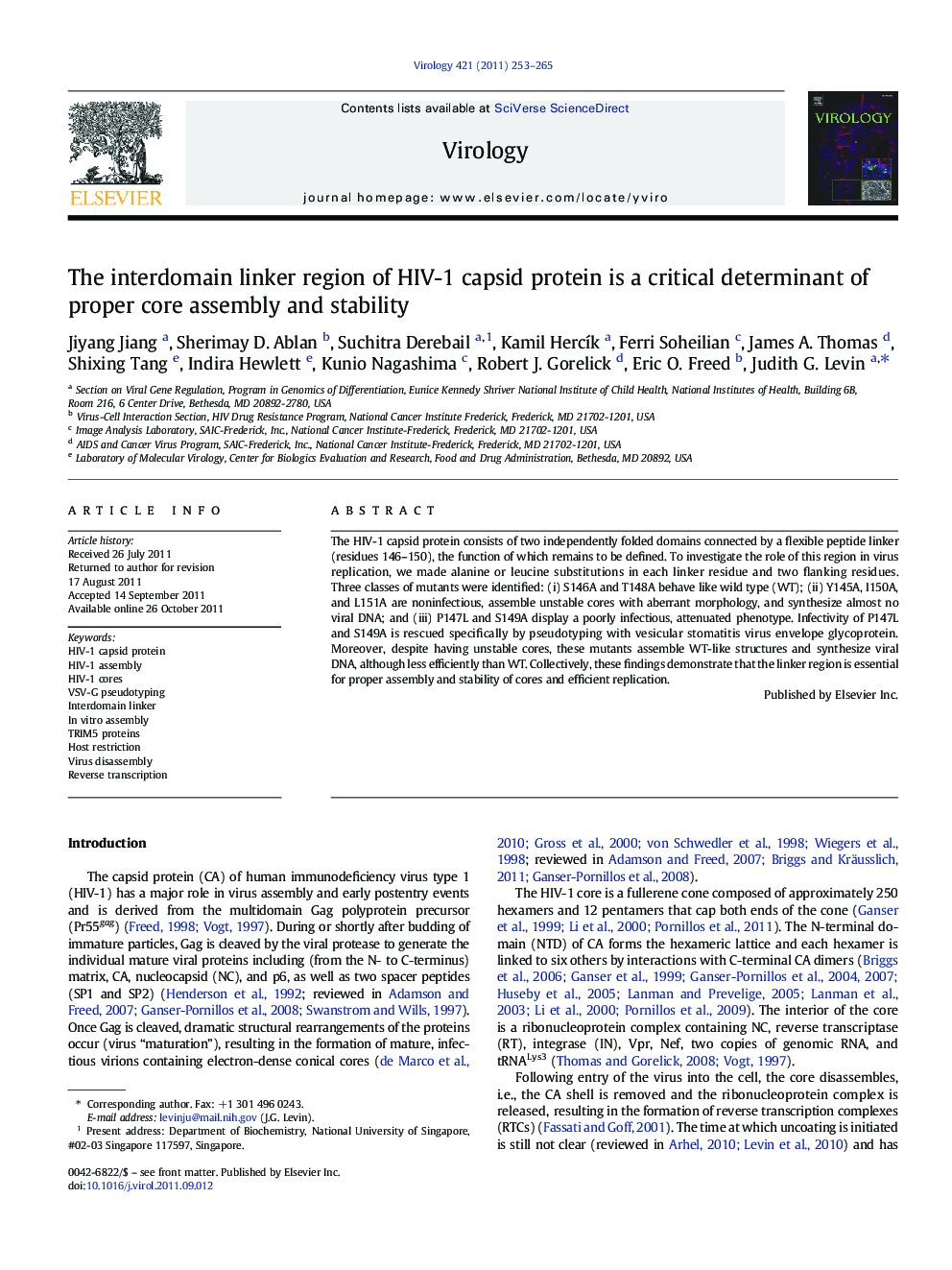| Article ID | Journal | Published Year | Pages | File Type |
|---|---|---|---|---|
| 3424668 | Virology | 2011 | 13 Pages |
The HIV-1 capsid protein consists of two independently folded domains connected by a flexible peptide linker (residues 146–150), the function of which remains to be defined. To investigate the role of this region in virus replication, we made alanine or leucine substitutions in each linker residue and two flanking residues. Three classes of mutants were identified: (i) S146A and T148A behave like wild type (WT); (ii) Y145A, I150A, and L151A are noninfectious, assemble unstable cores with aberrant morphology, and synthesize almost no viral DNA; and (iii) P147L and S149A display a poorly infectious, attenuated phenotype. Infectivity of P147L and S149A is rescued specifically by pseudotyping with vesicular stomatitis virus envelope glycoprotein. Moreover, despite having unstable cores, these mutants assemble WT-like structures and synthesize viral DNA, although less efficiently than WT. Collectively, these findings demonstrate that the linker region is essential for proper assembly and stability of cores and efficient replication.
► Mutational analysis of residues 145–151 (linker region) in HIV-1 capsid protein. ► Y145A, I150A, L151A noninfectious, severe defects in core morphology and stability. ► P147L, S149A poorly infectious, infectivity rescued by VSV-G, attenuated phenotype. ► Latter mutants make some viral DNA, assemble normal looking, but unstable cores. ► Linker residues essential for proper assembly and stability of HIV-1 cores.
